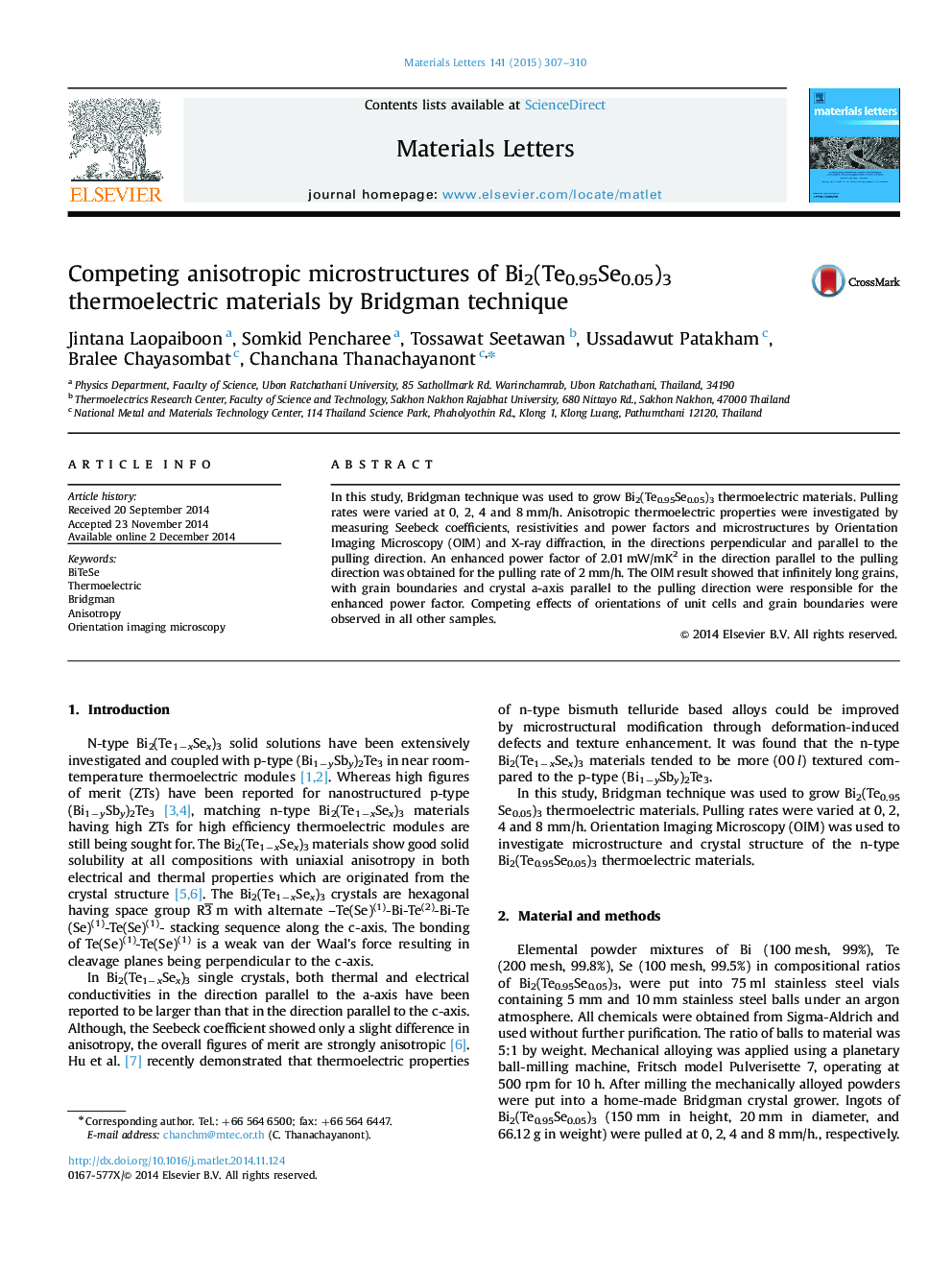| Article ID | Journal | Published Year | Pages | File Type |
|---|---|---|---|---|
| 1643185 | Materials Letters | 2015 | 4 Pages |
•Anisotropic thermoelectric properties due to microstructures were investigated.•OIM results showed orientations of grain boundaries and unit cells.•Enhanced power factor was obtained when a-axes and grain boundaries are aligned.•An optimum pulling rate resulted in columnar infinitely long vertical grains.•Grain boundary effect can be avoided in Bridgman grown Bi2(Te0.95Se0.05)3.
In this study, Bridgman technique was used to grow Bi2(Te0.95Se0.05)3 thermoelectric materials. Pulling rates were varied at 0, 2, 4 and 8 mm/h. Anisotropic thermoelectric properties were investigated by measuring Seebeck coefficients, resistivities and power factors and microstructures by Orientation Imaging Microscopy (OIM) and X-ray diffraction, in the directions perpendicular and parallel to the pulling direction. An enhanced power factor of 2.01 mW/mK2 in the direction parallel to the pulling direction was obtained for the pulling rate of 2 mm/h. The OIM result showed that infinitely long grains, with grain boundaries and crystal a-axis parallel to the pulling direction were responsible for the enhanced power factor. Competing effects of orientations of unit cells and grain boundaries were observed in all other samples.
Graphical abstractFigure optionsDownload full-size imageDownload as PowerPoint slide
